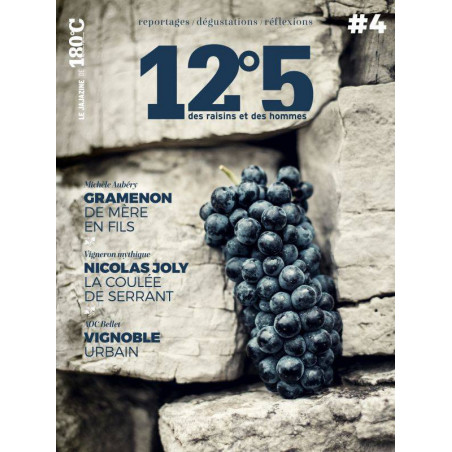The less, the better, but it's still too much!The editorial of 12°5 #4In December 2017, the consumer association UFC Que Choisir unveiled the results of tests conducted on 38 great vintages of Bordeaux, mostly from the 2014 vintage. The association had 177 molecules researched. In the end, these Bordeaux wines still contained pesticide residues, but three times less than in 2013, and only 3 bottles showed no trace.At once, some colleagues rejoiced at this news and called for a toast to the efforts made. In the editorial office, we didn't break out the champagne, even organic, and certainly didn't applaud wildly. We simply acknowledged that some winemakers were moving in the right direction. We also had a disheartened thought for the others, the die-hards, who maintain that there is no other way, that they have no choice, and that they do not believe in alternative solutions to break free from the model in which they are trapped.At the same time, we were receiving the first articles from our journalists who had gone out into the field from the first days of spring to the end of summer. In their bags, organic reports on Michèle Aubéry from Domaine Gramenon in Drôme - Xavier Courant from Domaine de l'Oubliée in Bourgueil - Delphine and Julien Zernott from Pas de l'Escalette in Hérault - Nicolas Joly from La Coulée de Serrant in Savennières - the Arena family in Patrimonio, Corsica - Jérôme Binda on the island of Tinos in Greece, and Thomas Mousseau, a whisky producer in the Berry region.Faced with the stubbornness of some winemakers who refuse to believe that another form of viticulture is possible, we can only submit to them some reflections from the winemakers we met, like Nicolas Joly from La Coulée de Serrant, who, at the end of the 1970s, after following the advice of the agricultural chamber to use herbicides, noticed that "the fauna was changing, the soil was cracking and lightening. [] there was something fishy going on." At Domaine Gramenon, Michèle Aubéry points out that manual hoeing helps combat weeds so they don't compete too much with the vine and don't become a source of humidity and disease.And when there is disease, either alternative solutions are found, and there are some, or it is treated intensively. On one side, peasant common sense, on the other hand, ease, the refusal to change, to think of the planet and the well-being of those who live on it.Philippe Toinard, editor-in-chief of 12°5.





